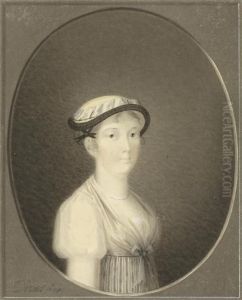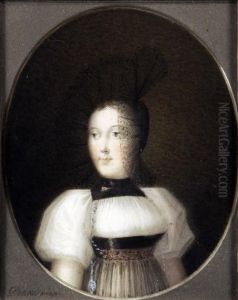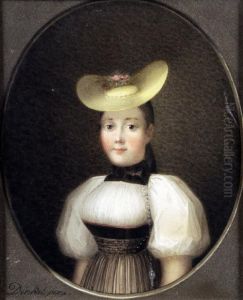Markus Dinkel Paintings
Markus Dinkel was a Swiss-German artist known primarily for his contributions as a painter and engraver during the late 18th and early 19th centuries. Born in 1762 in Switzerland, Dinkel's early life set the stage for his evolution into a respected artist within the European art community. His works, though not as widely recognized today as some of his contemporaries, played a significant role in the artistic movements of his time, particularly in the realms of religious and portrait painting.
Dinkel's artistic journey began in his youth, showing an early aptitude for drawing and painting, which was nurtured through formal education in the arts. He traveled extensively across Europe, a common practice among artists of the period, which allowed him to study various styles and techniques. These travels greatly influenced his work, incorporating elements from the Italian Renaissance along with the burgeoning Neoclassical style that was sweeping through Europe during his formative years as an artist.
Throughout his career, Markus Dinkel was especially known for his ecclesiastical commissions. He created numerous altarpieces and religious works for churches across Switzerland and Germany, which were celebrated for their spiritual depth and technical proficiency. His ability to blend the traditional aspects of religious art with the emerging trends of his time allowed his works to resonate with both the clergy and the layperson.
In addition to his religious works, Dinkel was also a proficient portrait artist, capturing the likenesses of many prominent figures of his era. These portraits are characterized by their detailed rendering and the emotional depth they conveyed, offering insights into the personalities and social standings of his subjects. Dinkel's skill in this genre helped to secure his reputation and provide a steady stream of commissions.
Despite his contributions to the art world, Markus Dinkel's name has not endured as prominently as some of his peers. His death in 1832 marked the end of a career that, while impactful, was often overshadowed by the larger movements and more famous artists of his time. Nevertheless, Dinkel's work remains a valuable part of the study of European art history, offering a glimpse into the transitional period of the late 18th and early 19th centuries, where the last echoes of the Renaissance merged with the early whispers of Modernism.


